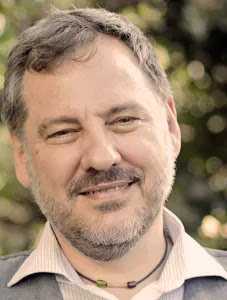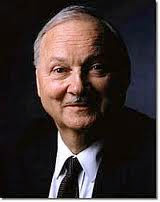Comments on development initiatives paper on Final ODA data for 2016 and the challenges
This year will see the Secretary General host a Sustainable Finance
Summit for the SDGs in September. This will by its nature address how to broaden the way
we fund the SDGs. I will be doing a number of blogs this year to address
some of the new areas that funding could come from while also raising cautions
or concerns about how that could impact on the landscape of stakeholders.
to start with lets lookat where we are with development funding. A very good development initiatives fact sheet arrived in my
intray over the weekend which makes fascinating reading. It happened at the
same time as an interesting email came in too. It was from Mark
Ritchie former Minnesota Secretary of State who pointed out a very interesting interview
with Kevin Watkins the CEO of Save the Children Fund (UK) and on the page I found
a link to a very interesting blog on the Oxfam page by Duncan Green on the 10
top thinkers on Development summarized in 700 words by Stefan Dercon.
All three are well worth reading and each took me out of the
normal day to day forest of work and made me think. I will address all three in blogs in the coming weeks. To start with let’s look at the excellent
development initiatives fact sheet on ODA.
development initiatives
This really useful background fact sheet “Final
ODA date for 2016: an initial analysis”.
It is for OECD countries so excludes Turkey (USD $6.2 billion [0.79 of GNI), China ($6.9 billion 2014) and UAE ($4.39 billion 2015 [1.09% GNI]) who all give significant aid wither as % or as a total amount.
It is for OECD countries so excludes Turkey (USD $6.2 billion [0.79 of GNI), China ($6.9 billion 2014) and UAE ($4.39 billion 2015 [1.09% GNI]) who all give significant aid wither as % or as a total amount.
In 2016 the USA gave $34.4 billion (0.18% GNI) and
this is likely to fall further in 2017 it is worth noting that in 1963 under President Kennedy the USA gave 0.6%
GNI.
The OECD average is 0.32% GNI to put it all into perspective. The
only Western European country that is below the USA in % terms is Greece 0.14% GNI - but this also represents a huge 54.7% increase on 2015 so it is starting to get oover some of its financial problems.
There are now six OECD countries giving more than 0.7% GNI
(UK, Germany, Sweden, Denmark, Luxembourg and Norway). But the interesting issue
is that Turkey and UAE are also giving more than 0.7%
Key facts from the development initiatives report include:
- Net ODA from DAC donors rose in 2016 by over 10% to a new record high of US$145 billion.
- Part of the rise was due to a continued rapid increase in in-donor refugee costs reported as ODA.
- Even if increases in refugee costs are excluded, total net ODA still grew by US$10 billion (in real terms) compared with 2015.
- Other factors driving the rise in ODA were: increased core multilateral ODA, a rise in support for specific-purpose funds and increased debt relief (due mostly to Spain’s rescheduling of Cuba’s debt).
- Ethiopia has replaced Afghanistan as the single largest recipient of total ODA from DAC members and multilateral institutions, while Afghanistan remains the largest recipient of bilateral ODA.
- Non-transfer ODA – which includes in-donor refugee costs – was the modality that increased the most between 2015 and 2016.
- Recipient governments continue to be the largest channel of delivery for ODA, accounting for over half of total ODA from DAC members and multilateral institutions. Private sector institutions (a new channel reporting code introduced this year) accounts for 4% of bilateral ODA from DAC members and multilateral institutions (US$6.6 billion). (development initiatives, 2018)
- It’s clear that the delivery of the SDGs will need private sector funding as the amounts that are being quoted to deliver the SDGs are in the region of $3-5 trillion a year which dwarfs ODA contributions by more than a factor of 10.
- The reposition of aid around the SDGs is still early days. If you imagine that the SDGs were agreed to in September 2015 which means for most governments most funding priorities would not change until 2016 when they would produce budget commitments around those new priorities which would mean that funding could be applied for in 2017 but probably in many cases not actually funding too much before 2018.
Back to the report
Some countries have had a large increase in their ODA contribution these are: Austria (22.2%),
Belgium (19.3%),
Czech Republic (28.8%),
Greece (54.7%),
Hungary (28.8%),
Iceland (30.5%),
Italy (25.9%),
Korea (18.1%),
Poland (56.7%),
Slovak Republic (25.5%),
Spain (205.2%)
EU Institutions (24.3%) and
Germany (36.4%) and now joining the 0.7% club though more than half of this was due to refugee costs.
Belgium (19.3%),
Czech Republic (28.8%),
Greece (54.7%),
Hungary (28.8%),
Iceland (30.5%),
Italy (25.9%),
Korea (18.1%),
Poland (56.7%),
Slovak Republic (25.5%),
Spain (205.2%)
EU Institutions (24.3%) and
Germany (36.4%) and now joining the 0.7% club though more than half of this was due to refugee costs.
Overall development aid reached a new peak of USD 142.6
billion in 2016, an increase of 8.9% from 2015 after adjusting for exchange
rates and inflation. There was a rise in aid spent on refugees in donor
countries boosted the total – but even stripping out refugee costs aid rose
7.1%, according to official data collected by the OECD Development Assistance
Committee (DAC). (OECD, 2018)
Even with this there is bad news, the 2016 data shows that
bilateral aid to the least-developed countries actually fell by 3.9% in real
terms from 2015 and aid to Africa fell 0.5%, “as some DAC members backtracked
on a commitment to reverse past declines in flows to the poorest countries.”
(OECD, 2018)
At this point only 4% of ODA is channeled through the
private sector but this was a new category in the DAC Report and will probably only
grow in the future. Public Private Partnerships (PPP) at this point are also showing
only a small amount of ODA going to them again one could imagine some blended
finance using ODA funds for PPPs in the future.
The Addis Ababa Action Agenda (AAAA) defines “blended finance” as activities that combine “concessional public finance with non-concessional private finance and expertise from the public and private sector, special-purpose vehicles, non-recourse project financing, risk mitigation instruments and pooled funding structures.” As noted in the Addis Agenda “an important use of international public finance, including ODA, is to catalyse additional resource mobilization from other sources, public and private” (Addis, paragraph 48 and 54)
The Addis Ababa Action Agenda (AAAA) defines “blended finance” as activities that combine “concessional public finance with non-concessional private finance and expertise from the public and private sector, special-purpose vehicles, non-recourse project financing, risk mitigation instruments and pooled funding structures.” As noted in the Addis Agenda “an important use of international public finance, including ODA, is to catalyse additional resource mobilization from other sources, public and private” (Addis, paragraph 48 and 54)
There is already work being undertaken by the UN Economic
Commission for Europe ona set of Principles.
Principle Number 1: People first PPP
Principle Number 2 – Policy first for people first projects
Principle Number 3 - Improving Capacity Building
Principle Number 4 – Strengthening Accountability
Principle Number 5: Risk-Sharing and De-Risking
Principle Number 6: Procurement: Value for People, Planet
and Prosperity
Principle Number 7: The Environment
Principle Number 8 – Innovative Financing – ‘Doing well by
doing good’
The need for a serious conversation in New York around Principles
for PPPs for SDGs is urgent. There have been some very good workshops but
member states need to grasp this now before the process spirals out without embedding
firm principles that PPPs can be measured by. Help is needed to help developing countries
and in particular sub-national governments to negotiate PPPs with
the private sector. A level playing field is needed. Could this be something that UNCTAD
could set up?
NGOs have been slow to put ideas forward on Principles for PPPs mostly just opposing them. The Communitas
Coalition produced a discussion paper on this in 2016 on what some Principles might look like:
Objectives of PPPs
PPPs should result in improved outcomes for end users and
citizens, through improved service quality, accessibility and
PPPs should be consistent with and support the long-range
sustainable development plans of the public
Conditions of Suitability
The following conditions need to be met in order for the
local/regional authority to successfully engage in a PPP:
Need “sound enabling environment” – rule of law, high
standards of public and corporate governance including: fair competition laws,
transparency, accountability and enforcement mechanisms, and adequate
anti-corruption
Public authority must have the capacity to negotiate and
independently oversee implementation of PPP on an equal basis with private
sector
Public authorities should evaluate the potential life-cycle
costs, benefits, and risks of a range of available infrastructure financing and
management alternatives, including a careful “Value for Money” analysis,
comparing the financial impacts of the PPP option against those of a
traditional public financing
Transparency measures should be maintained throughout the
lifecycle of the project, including full and proactive public disclosure of PPP
agreements, with specific accountability instruments that establish
performance-based responsibilities of all parties. Governments should include
PPPs in national accounts rather than off- balance sheet, so they are part of
debt sustainability
Meaningful and sustained consultation with and participation
of end-users and other (local) stakeholders in decision making through a
deliberative process, from design to implementation and evaluation, including
prior to infrastructure project
Contracting
Provisions
Appropriate (equitable) risk sharing should be included,
based on assessment of public interest, with caution concerning any public
sector
Payment modalities and return should be commensurate with
investment risk allocation. Remuneration to the private party(ies) should be
linked to predetermined, mutually-agreed performance
The sources of revenue to pay the private partner should be
clearly identified and made transparent from the outset of a
Employment preference should be specified for local labor
and, where it exists, for unionized labor to ensure health and safety
protections, honor prevailing wage rates, and maintain benefit commitments
(e.g., pensions, holidays). At a minimum, jobs created must abide by the ILO’s
decent work
Responsibilities concerning social and environmental aspects
of the projects should be clearly identified, as well as risk allocation in
case of unforeseen
Clear, independent performance monitoring and reporting
mechanisms must be identified, including provisions to monitor private
partner(s)’ observance of human rights principles and coherence with the
Sustainable Development Goals (SDGs).
Include clear, mutually acceptable dispute resolution
procedures as well as defined mechanisms for renegotiation, with full public
disclosure of renegotiation process and results.
Clearly identify the grounds and procedures for terminating
the partnership, with full disclosure of the terms of termination within the
PPP.
Back to the development initiative paper having the
information of how ODA is being spent and also that more and more countries are
moving towards the 0.7 GNI for ODA is good news. But the big questions on mobilization
the trillions for deliverign the SDGs in a period where the world is looking increasing insecure and
the US has abdicated any leadership role is very worrying. There is no question
in my mind that the negotiations of the SDGs and the Paris Climate Agreement represents
some of the best that multilateralism can do. Even in bad times we have a road
map – some may take the wrong path sometimes, but the rest of us whether its
governments, the UN or stakeholders should continue to work together to deliver
those commitments.And work for a sustainable, fair, equitable, demoractic and just world.








Comments
Post a Comment